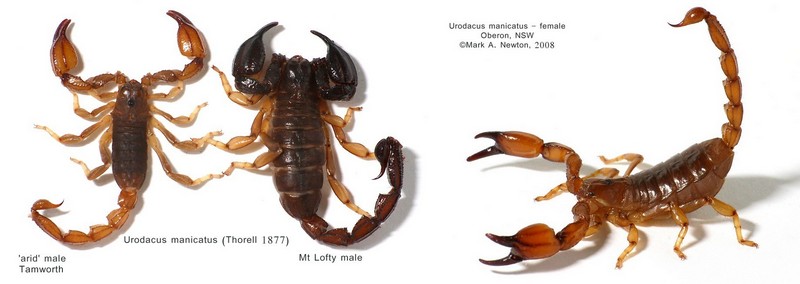
Size: 35-50mm
Ecomorphotype: Semi-Fossorial – Rock Scrape Dweller
Description: A member of the endemic Australian Urodacidae family, whose closest relatives include members of the Scorpionidae inc., Heterometrus, Opisthophthalmus, and Pandinus.
This species is a relatively small member of the Urodacus genus with a maximum size of about 40-50mm, very similar in size to U. armatus. It has stout hands with very short fingers and is most often dark brown to black in colour. The legs are generally quite short with equal length and strongly curved tarsal claws. No sand comb is present. Cheliceral teeth show a lack of secondary serrations. South Australian forms often have a dusty grey coloured mesosoma with a shiny dark black anterior half to the carapace and pedipalps. Forms from the Alpine areas of NSW to SE QLD are often a much lighter sandy colour and smaller in size, looking more like a desert than mesic species - easily confused with U. armatus .
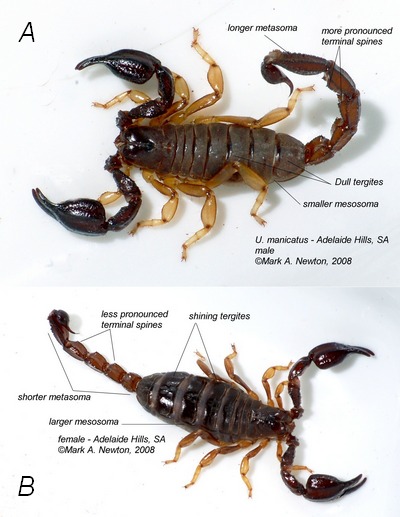
Sexing
Male (A) displays a slightly longer metasoma with more pronounced terminal spines; dusty, dull mesosomal tergites.
Female (B) displays a slightly shorter metasoma with less pronounced terminal spines; glossy mesosomal tergites.
Most commonly found under rocks in the Great Divide from northern NSW/SE Qld, right through to Vic, and SA as far as the Mt Lofty Ranges with some populations a little further west. It lives a similar existence to U. elongatus, occupying a scrape under a rock with a short burrow at one end. First instar young remain with mum from 14-16 days depending on temperature, with a further period while the cuticle hardens.
Sexing: Males show the typical Urodacid sexual dimorphism with split operculum and genital papillae present. Very little sexual dimorphism exists. Males have significantly longer pectines with more teeth than females and are often thinner in body shape. The metasoma of each sex are similar in length.
Species Complex
With a great deal of variation across its range this species is a complex, but differentiating into valid species will be a difficult matter even with the use of DNA.
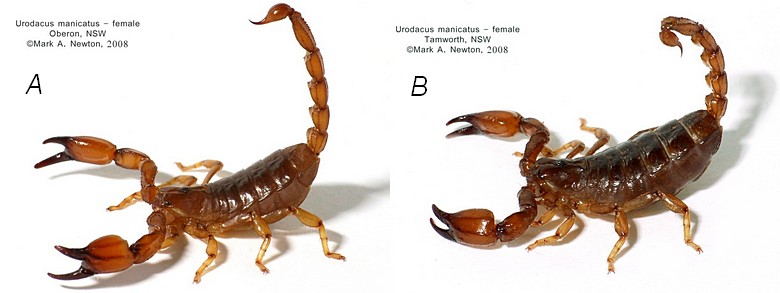
A: Adult Female Oberon, NSW B: Adult Female Tamworth, NSW
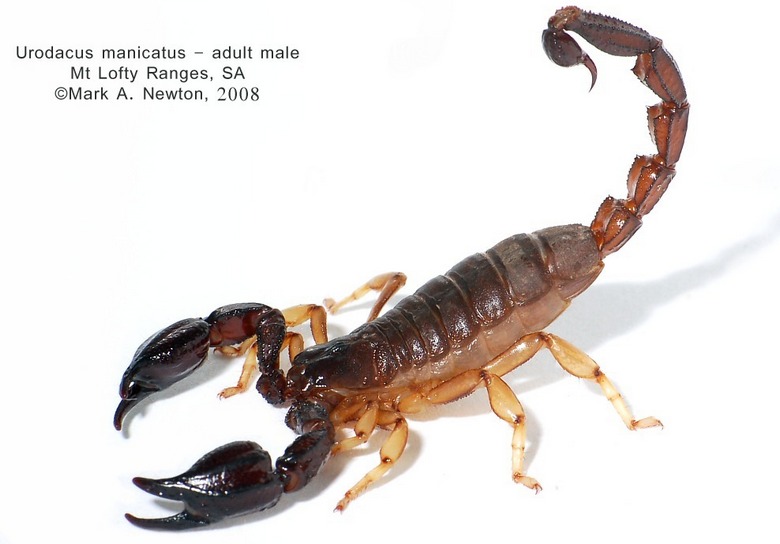
Adult Male - Mt Lofty ranges, SA
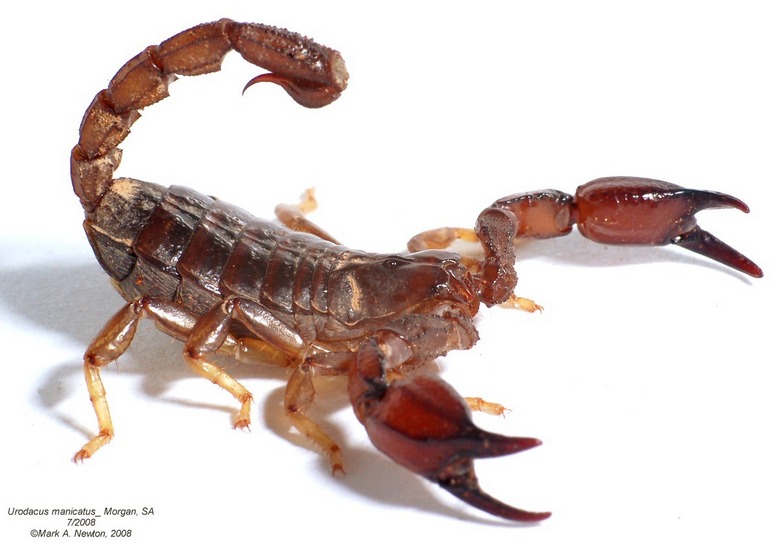
Inland form - Morgan, SA (riverland)
Reference:
Koch, L. E. 1977. The taxonomy, geographic distribution and evolutionary radiation of Australo-Papuan scorpions. Records of the Western Australian Museum 5 (2):83-367.
